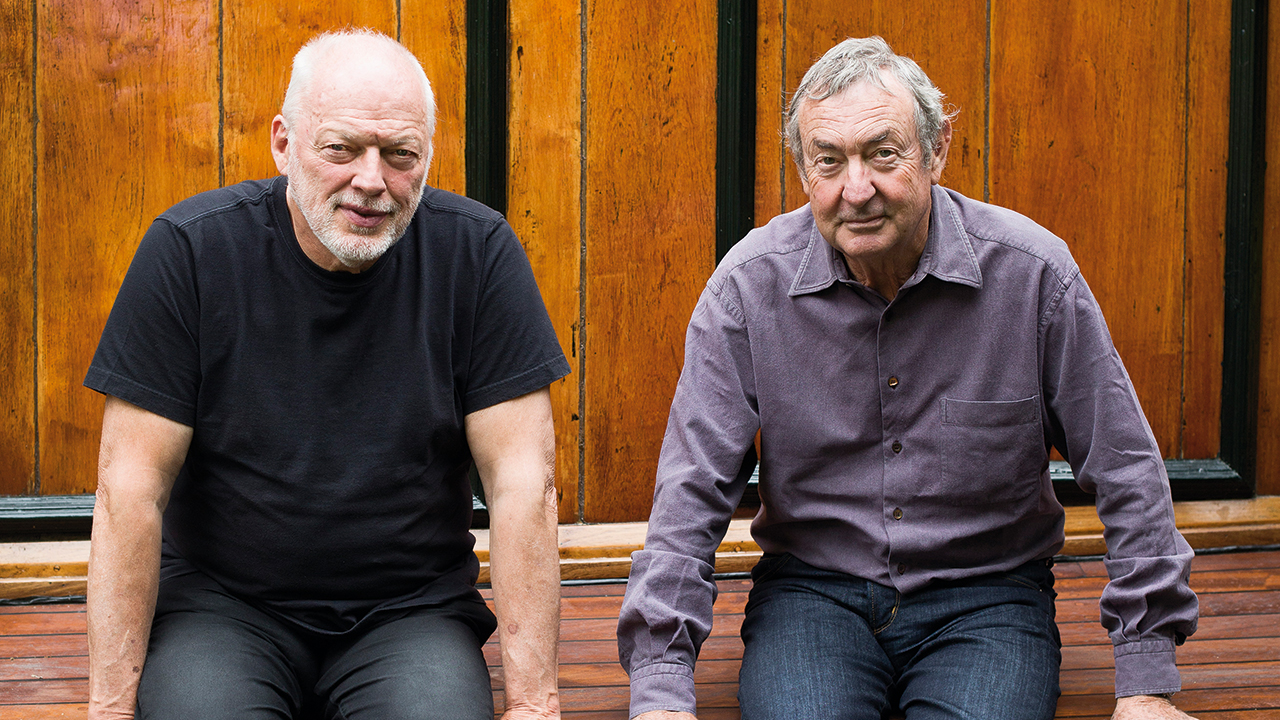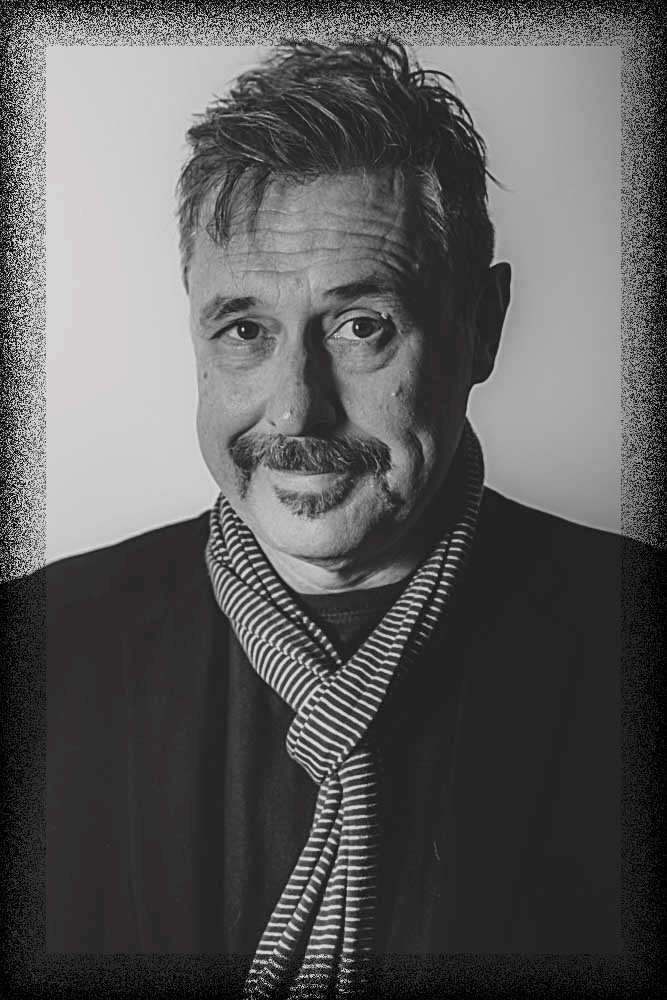“It comes from all sorts of ideas,” explains David Gilmour of Pink Floyd’s new album. “Some of it is improvised, quite a bit of it is just the two of us, Rick [Wright] and me, or the three of us, improvising together. Some of it is half-written ideas that one of us had come up with, rehearsed and considered as a start point for something.”
Those ideas often happened on the Astoria, Gilmour’s houseboat moored on the River Thames in Hampton, west London. It’s also where many peculiar events have taken place. Engineer Andy Jackson, who has worked with Pink Floyd and Gilmour since 1980, recalls sitting in the control room there in 2005 while Gilmour was recording On An Island. That’s when the call came through from Bob Geldof, asking if the long-dormant Floyd would play together again for the Live 8 concert. It was also there, seven years later, that Jackson learned there was to be a new Pink Floyd album, some 20 years after they had last released fresh material, and after years of Gilmour saying “absolutely, definitely not”. Another surprise was that Jackson would be working on it. “I was as amazed as you are,” he says, standing in the oak-panelled room on the boat, once owned by theatrical impresario Fred Karno.
It was no secret that there was a surplus of material from the sessions for what was to become The Division Bell. Due to the amount of available content, the album had at one point been envisaged as a double, with one disc of vocal tracks and the other built from the instrumental sessions that began at Floyd’s Britannia Row studios and continued on the Astoria in early 1993. All featured Gilmour, drummer Nick Mason and keyboard player Rick Wright. The purpose of these sessions was to create ideas for songs. “After two weeks we had taped an extraordinary collection of riffs, patterns and musical doodles,” Nick Mason noted in his book Inside Out: A Personal History Of Pink Floyd. “Some rather similar, some nearly identifiable as old songs of ours, some clearly subliminal reinventions of well-known songs.”
From these, around 40 workable ideas emerged. As The Division Bell took shape, it became clear that there would be no time to fashion these instrumentals into an album. As a result, the recordings languished, but not before an artefact was created by Jackson that subsequently became another brick of Floydian mythology. The Big Spliff was an hour-long composite of the ambient end of this material, and Mason alerted those outside the inner circle to it in his 2004 autobiography. “There was no brief for it – I did it off my own bat,” Jackson says. “As we had all this fantastic, psychedelic, noodly material, I did a mash-up of it over the school holidays. I wanted to make Echoes or Wish You Were Here again.”
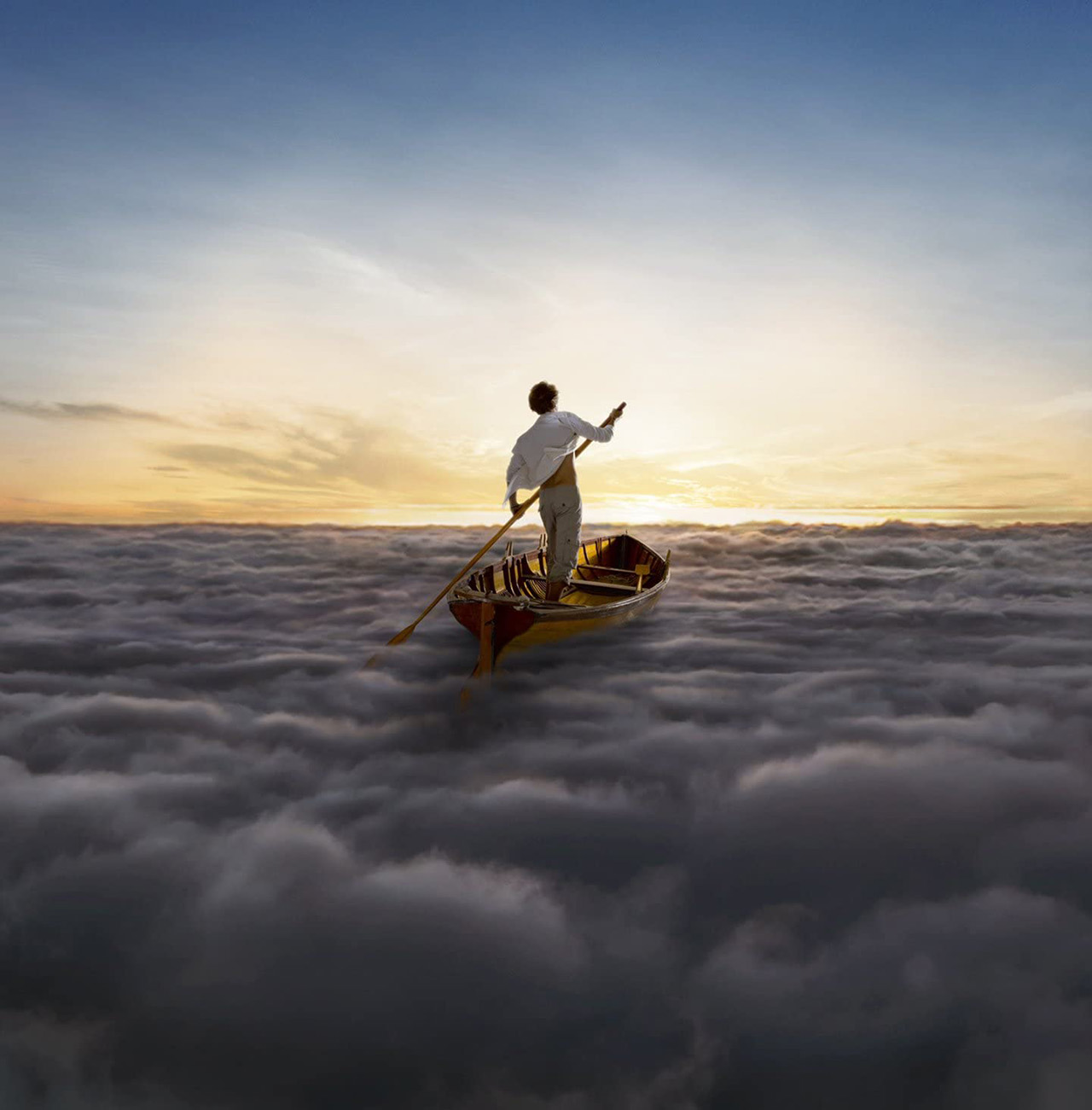
Lest we forget, when The Big Spliff was compiled in the early 90s, Pink Floyd were once again fashionable among the younger generation. In the wake of the acid house revolution of the late 80s, Floyd had been reinstated as the chill-out music of choice. Groups like The Orb made this connection explicit – the cover of their debut album, The Orb’s Adventures Beyond The Ultraworld, contained an inverted Animals-esque Battersea power station in its artwork and a track entitled Back Side Of The Moon. Fellow traveller and sometime Orb collaborator, former Killing Joke bassist Martin ‘Youth’ Glover, was a huge fan as well, and was rumoured to have released some ambient mixes of Floyd’s work to the underground at the time. Nick Mason was later to say that “unlike Gong’s Steve Hillage – we never received any invitations to join this next generation on stage”, but who on earth would have thought Pink Floyd would have been available to do such a thing?
The Division Bell was released in March 1994, and many thought that it marked the end for Pink Floyd. A much-loved record, it demonstrated that the group could stand on its own two feet, extricating itself from the war of words with former leader Roger Waters. It became the only Floyd album to top the charts on both sides of the Atlantic, and it went on to be one of the most successful releases in their history. After the resulting tour, while the band never officially disbanded, there was silence.
Through the intervening decades, amid that hush, there was tumult and loss. In 2005, there was rapprochement between Gilmour and Waters and the group played a four-song set at Live 8 in Hyde Park. Gilmour released On An Island and played a successful world tour with Rick Wright as his keyboard player, on which the two old friends bonded again (“It was like rediscovering an old love,” muses Jackson). There was also a litany of loss. Floyd manager Steve O’Rourke and orchestrator Michael Kamen died in 2003; long-estranged founder Syd Barrett died in 2006; designer Storm Thorgerson in 2013; but the departure that came as the greatest surprise was that of Wright, who died of cancer in September 2008. “All were so sad, but Rick’s passing was the big one. None of the others were in the band,” Jackson says.
All surviving members, past and present, issued the most heartfelt statements. Gilmour encapsulated the work of this enigma when he said: “He was gentle, unassuming and private, but his soulful voice and playing were vital, magical components of our most recognised Pink Floyd sound. I have never played with anyone quite like him.”
With Wright’s passing, it felt that Floyd had been laid to rest forever.
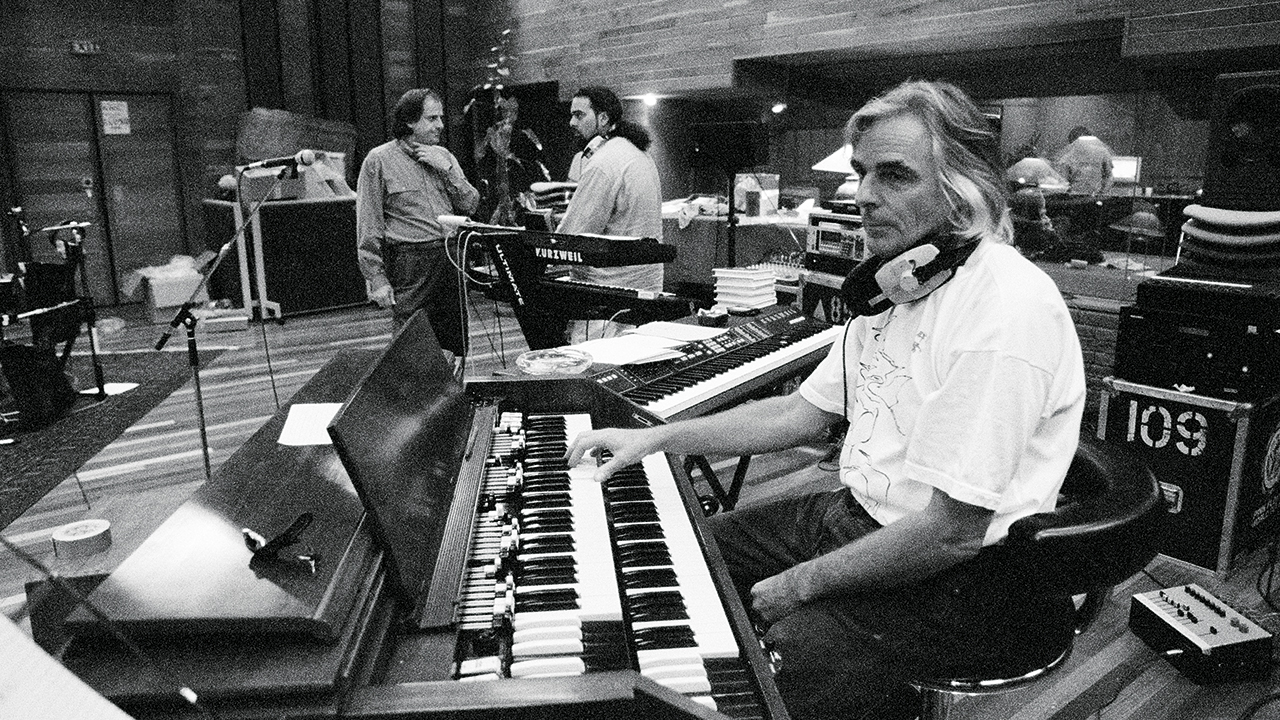
While working on new material on the Astoria in 2012, Gilmour thought about the wealth of unreleased material that was recorded at the time of The Division Bell and wondered if anything could be done with it. He called up his old friend, Roxy Music guitarist Phil Manzanera, and asked him to have a listen. Gilmour and Manzanera had known each other since the 60s. They had co-written One Slip together on 1987’s A Momentary Lapse of Reason, and Manzanera had co-produced On An Island.
“I went down to the Astoria and Andy mentioned The Big Spliff,” Manzanera recalls. “I didn’t want to listen to that. I wanted to go back to everything they recorded in its empirical source.”
With this noble approach, the scale of the operation began to dawn on Manzanera. “I then realised there would be 20 hours to listen to. Before I started, I listened again to every Pink Floyd album, the whole catalogue. I’m very conscious of their legacy; very conscious of doing something that would not be considered appropriate for Pink Floyd.”
In that first long listen, aided by Jackson, Manzanera made notes of the passages that he liked and, as a Floyd fan, thought of what he would like to hear. At some point during those first six weeks, Manzanera realised that although he had a lot of workable sections, he had little idea of how to convert them into something manageable, so he took a novel approach. “I wondered what they did in classical music. I Googled how long a movement was and saw that it was between eight and 12 minutes. I was brought up in the 60s listening to long pieces of music. With Roxy, all the time we would just jam away and then listen back to it and pick out the good bits and make something out of that.”
With Jackson and long-serving engineer Damon Iddins, Manzanera divided the raw material into four sections, moving parts around. “In the back of my mind, I like to think conceptually and contextually, at the same time as picking the bits I like, weighing it all up – all those aspects of a big picture. There were things like Rick playing his Farfisa Compact Duo that he hadn’t played since Wish You Were Here, and the sounds that he had used at Pompeii. I thought this sequence would be great with a bit of drums underneath it, so I took drums from somewhere else and put them under that, and I started to take diabolical liberties – I took a guitar solo from another track, changed the key and put it on another bit of instrumental.”
To assist him, he created a narrative thread for the work in his head: “Which, by the time I presented it to David, I’d actually written all out, with pictures,” Manzanera laughs. “I think he thought I was mad. It looked like some hippie, psychedelic trip.”
After six weeks, Manzanera had four 14 minute-sections, which he shared with Gilmour. “He asked me to play it to Nick, who also thought there was potential. And then… nothing happened for nine months.”
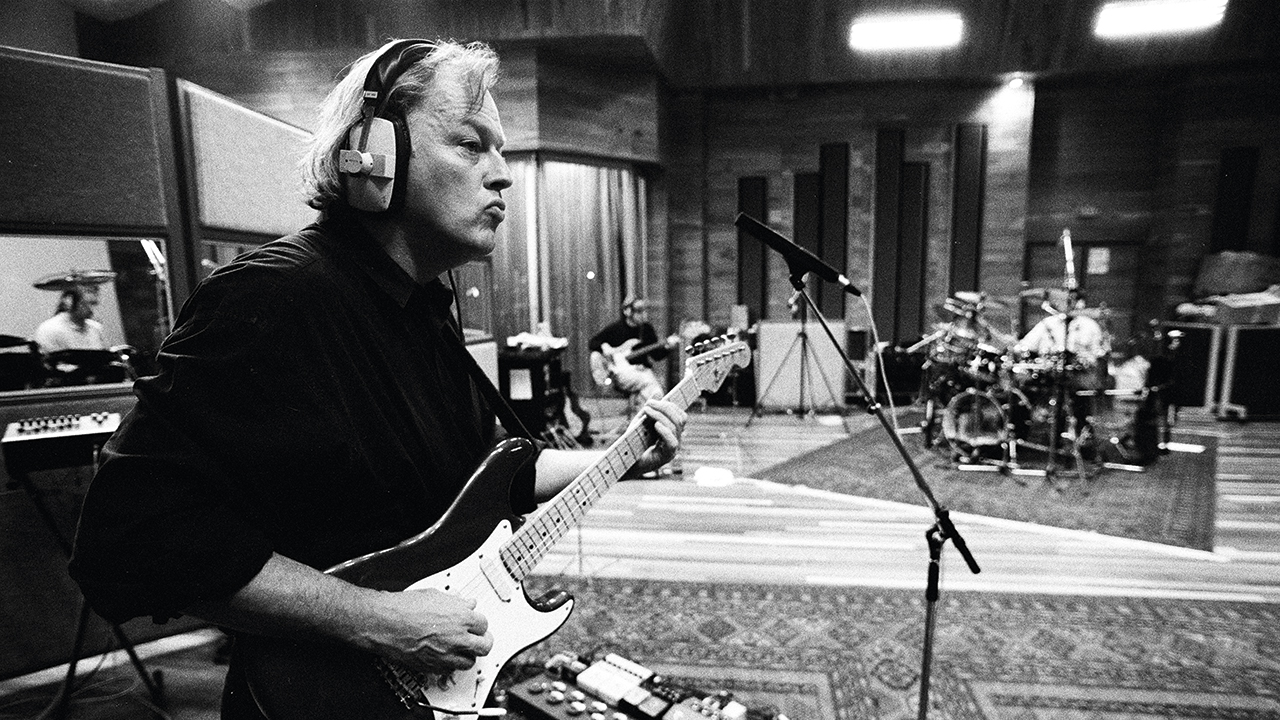
At the end of that hiatus, Gilmour still couldn’t work out what should happen with these pieces of music. “He felt it needed a bit of a fresh input,” Manzanera says.
Gilmour rang up his old acquaintance, Youth. Youth and Gilmour primarily knew each other through Floyd backing vocalist Durga McBroom, the singer in Youth’s dance ensemble, Blue Pearl. Later, Gilmour and Youth had worked together with Alex Patterson on The Orb’s Metallic Spheres, made in 2010. He’d also been a childhood friend of Guy Pratt, Floyd’s post-Waters bassist, who also appears on The Endless River.
Youth vividly recalls his first listen. “David asked me to come down to his farmhouse as he wanted to play me something that he was a bit stuck with, to see what I thought. It was a glorious summer’s day last June. The window was open and I was looking out over this beautiful Arcadian country landscape; swifts were darting in and out of the window, chirping away. David started playing what was the genesis of The Endless River. Three or four minutes in, I thought: ‘That’s Rick! This is Floyd.’ I was so blown away that I thought, ‘Whatever the gig is, even if I don’t get it, I’ll never forget this moment.’ I really enjoyed it. At the same time, I could see why David may have felt that it wasn’t right. When it finished, I said, ‘That’s Pink Floyd, isn’t it?’”
Gilmour replied simply: “Yes.”
Enthused and honoured to be consulted, Youth suggested he take the pieces away to his studios in Spain to rearrange them, to aid their flow. “My parting words to David were: ‘What’s your real vision on this?’” Youth recalls. “He replied: ‘Make it sound like us.’”
Youth was a student of the group’s work and history and, like Manzanera, wanted to create something that he, as a fan, would want to listen to. Apart from this, he had an outsider’s approach. “Phil was almost too respectful to the original sessions, which was probably the right and proper thing to do at that time,” Youth suggests. “I had a really fresh perspective. I was a bit younger and cheekier – I went in and radically rearranged it. I might take four bars and turn it into a three-minute piece.”
Youth put some ideas down on bass and guitar on the tracks to illustrate their potential. “It was very risky of me to do that, because I was worried that David might think I had gone too far. But what I’ve learned as a producer is that you have to be true to yourself. Luckily, David really liked it.”
“David gave Youth what is now the first and second part, to see where he could go with that,” Jackson recalls. “With the first section in particular, he made significant impact, saying it could be massively expanded. He extended it and put a rhythmic basis in it. Because he thought those two pieces should make an album, he made them enormously long, not realising there were another two. We ended up lobbing out whole chunks.”
Youth was particularly taken with Manzanera’s accompanying information: “It was true prog style – little flow charts and drawings to illustrate the concepts. I though this was great. All the elements were juxtaposed to each other and it wasn’t all ambient either – there were quite a few rocky and jazzy interludes.”
“Although I only used Pink Floyd bits,” Manzanera states, “Youth made it more obviously Pink Floyd.”
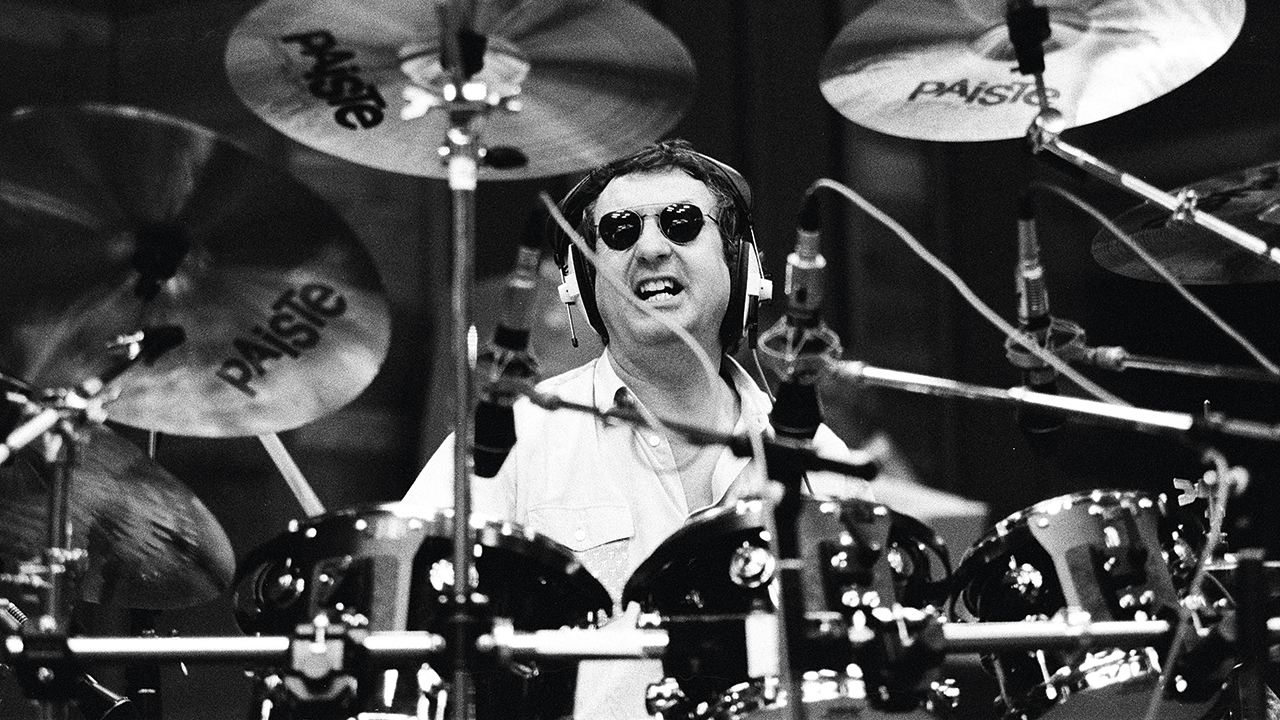
After Youth’s work, everybody listened to the new opus. “And it was then that David took control of the whole situation,” Manzanera says. “David took the best from Youth’s work and mine. He was then in charge.”
It was this shift in gear that really got the process underway in November 2013. Gilmour only wanted an embellishment to enhance the material: “A lot of those moments are so lovely, so magic, as they are, that we have just used those and enhanced them a little bit,” he explains.
Operations moved to Gilmour’s studio in Hove. “We headed down there and got Nick to recreate drums and David to add guitar parts,” Jackson says. “It became an interactive process after that.”
“It was fun, but it was pretty tough,” Youth adds. “Pink Floyd’s criteria is way above the clouds. Attempting to scale that mountain is no quiet endeavour – it’s a huge, epic undertaking.”
“It was great,” Manzanera continues. “There was a lot of new stuff added in to the old stuff. Because of the way technology has changed, it simply makes it something that couldn’t have been done before. It is very much a modern album in that sense because it does have all the ingredients of analogue recording, of people playing together, but then with today’s computer technology you can completely rearrange it, change the key of it and fashion something that’s very cohesive.”
“Modern technology is a wonderful thing in a recording studio,” Gilmour adds, smiling.
“There are ideas there that can be seen in some of the really early albums, in terms of assembly of music, that is not in terms of regular song format,” says Mason. “This record that is primarily instrumental, the obvious interpretation is that it is about music primarily, rather than lyrics.”
Initially, all four producers were involved in the studio, Jackson engineering while Manzanera and Youth would be at the back, giving Gilmour and the other artists – sax player Gilad Atzmon and long-time cohort Guy Pratt both make cameos – feedback and encouragement. “It wasn’t all plain sailing,” Youth recalls. “We had serious disagreements at times about content, the validity of doing one part or not, but it was undertaken with a lot of integrity.”
Youth talks of the sessions with childlike wonder. “Wish You Were Here is probably my favourite album, certainly the one I’ve bought the most and listened to the most. Actually being in the room with the same instruments and some of the same musicians… I thought would never have been possible, never considered it. Or that I’d be in a position to be considered to do anything like that – and then to be doing it is a remarkable, levelling experience. Pink Floyd’s production criteria are still the highest yardstick out there – probably only George Martin comes near.”
It was soon apparent – although according to all, unspoken – that the album was a tribute to Wright and how much his quiet presence was as much a shaper of Floyd’s sound as any of the other parts. “As we know, lead guitarists can obliterate everybody else with their sound,” laughs Manzanera. “And as we know, David has a unique, fantastic sound – the minute you hear it, you know it’s Pink Floyd. But having that Rick organ underneath puts it in a wonderful musical context, and the three of them, when they are together, it sounds like Pink Floyd.”
“If you were short of a great guitar or drum part, you could do something about that,” Jackson says. “But if you were short of a keyboard part, there was nothing that could be done. Bits of Rick became really precious – we would grab them.”
Between them, they isolated Wright’s Hammond and VCS3 playing, giving his work prominence. Youth adds, “It was like an Indiana Jones adventure in a way, playing around with all these references.”
One of the most precious sections can be found on Autumn 68, its title a lovely, poetic nod to Wright’s Summer 68 from Atom Heart Mother. A tape was located of Wright playing the legendary pipe organ at the Royal Albert Hall ahead of the band’s June 1969 show there, after which they were banned for using a smoke bomb. “We’ve used a minute and a half of the 20 minutes there,” Jackson says. “We gave it to Youth and selected a section.”
Youth was delighted. “According to David, he was playing his Unfinished Symphony just after they had finished soundchecking. Maybe one day, Gala [Wright’s daughter] may want to finish it, as it was a very beautiful piece. It was amazing to discover that Rick had composed a symphony.”
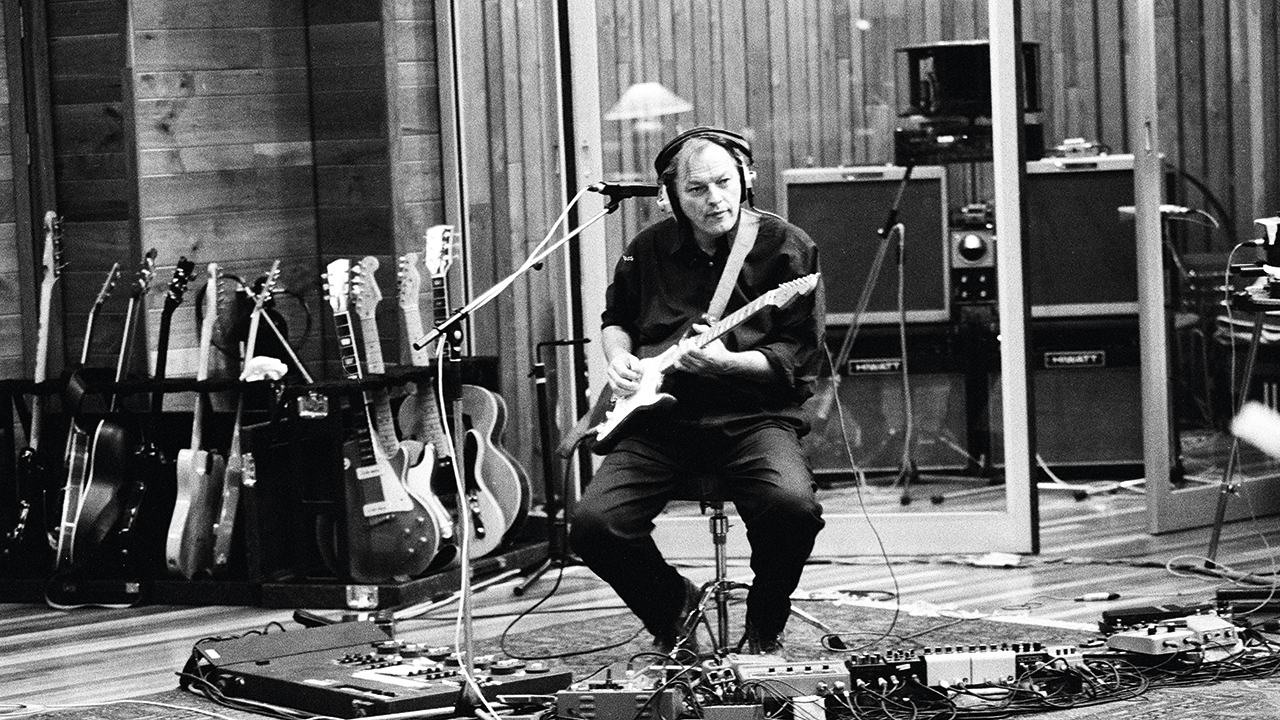
One of the most pleasant surprises of The Endless River is the rejuvenation of the other founder member, Nick Mason. “Nick has been playing a lot recently,” Jackson states. “We came in to do the drum session and he was completely on it. People underestimate how important Nick is in Pink Floyd. You hear it when someone else plays it; it’s just not right. Nick is so effective for this band. Ringo, Charlie Watts, there’s a whole list of them – the bands that wouldn’t be the same without the drummer nobody thinks about.”
The piece that ties it all together is Louder Than Words, the sole vocal track on the album, with lyrics written by Gilmour’s wife, novelist Polly Samson. “Polly came up with the idea for Louder Than Words,” Gilmour says. “Neither Nick nor I are the most verbal people, so Polly was thinking it was very appropriate for us to express what we do through the music.”
“It took David and Polly a long time to get the lyric on it and the vocal,” Youth says. “It was only two minutes so we had to extend it and make it into a song. Nick did the drums again; David did all the guitars. I discussed with David bringing in some R&B backing vocals, with a view to making it appropriate in the context of what we were doing and that it would make the record sound more like Pink Floyd. David really didn’t like the idea of that.”
A couple of weeks later, Youth and Durga McBroom were writing some new material for Blue Pearl. Youth told her about the project and they decided to record some vocals for the track (“After she’s picked up her chin from the floor!” laughs Youth), with Youth fully ready to shoulder the blame if Gilmour wasn’t happy with such insubordination. “I told Phil and Andy and they went [adopts fearful voice]: ‘David’s not going to like this – he said he didn’t want backing vocals on it. You’re going to hear some thunder!’”
Youth sent the tape and then heard nothing from Gilmour for a week or so. “He phoned up about something else and I eventually asked him what he thought about Durga’s backing vocals,” Youth says. “He replied, ‘Oh yes, I think they’re great – I’ve already sung some other things over them. [On the record, McBroom is joined by Sarah Brown and Louise Clare Marshall.] It’s funny with David, you think he’s going to be one way and then he goes completely the other. He’s unpredictable like that, and that’s good.”
The song is a beautiful reminder of the power of the band and the brand, and that is what unites them, given that they were, as Gilmour said in 1994, “never a jolly bunch of friends. Things between the four of us were always pretty rocky.” And with its meaningful lyrics, as general or as specific as you want them to be, it preserves Floyd’s mystery.
There was a great deal of deliberation about where the song should go. At one point it was at the end of the third section, but all agreed it made little sense to go back to instrumentals after that. In the end, the back sections of parts three and four were swapped over. “Conceptually, the one song at the end is pretty neat,” Manzanera laughs, “pretty good.”
Tinkering with the final mixes went on, but the actual recording has taken less than a year. “It wasn’t actually that long, from beginning to end, for a Floyd album,” Jackson says. “For any other group, it would have been a long process, but for a Floyd album, it wasn’t that bad!”
Everyone was delighted. Youth views the project as “a restoration of their sovereignty”.
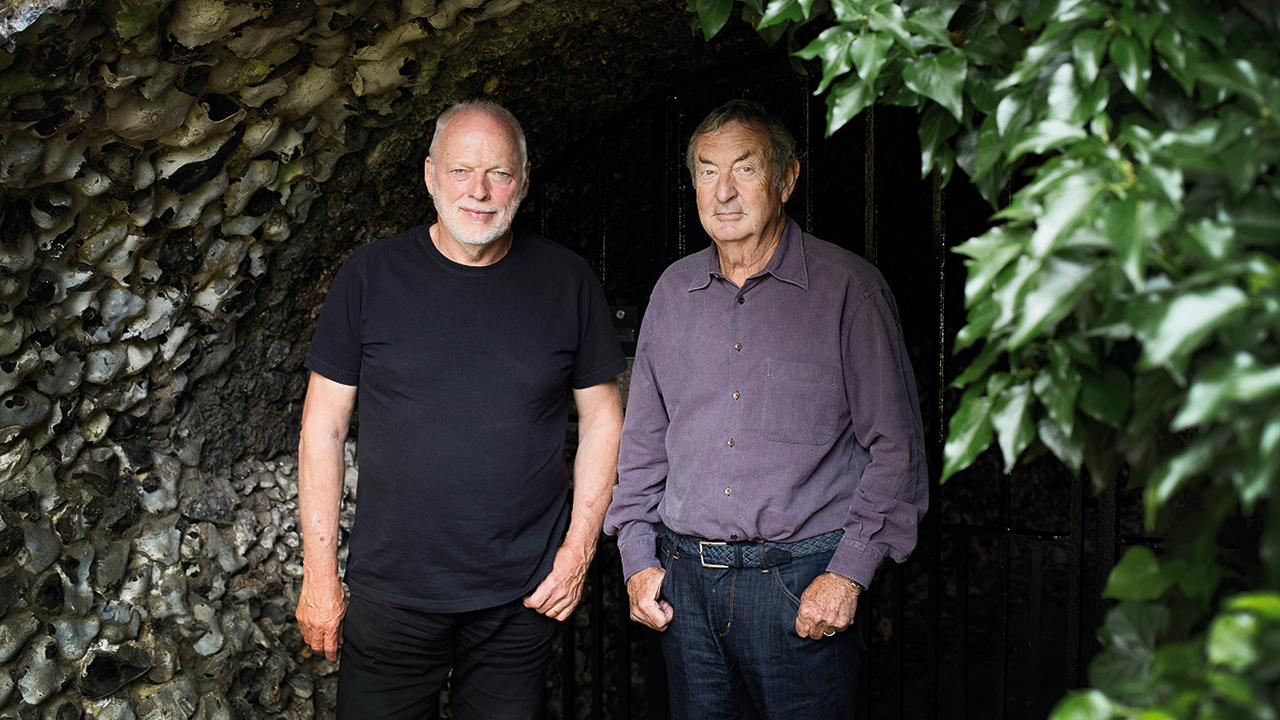
The news of the existence of The Endless River – its title the penultimate lyric from High Hopes, the final song on The Division Bell – went public on July 5 this year when Polly Samson matter-of-factly announced it on Twitter, pre-empting a tabloid threat to spill the beans. Youth followed it up the following day on Facebook, with his message “OK… peak experience number one, producing Pink Floyd.”
The announcement of the tracklisting and 18-year-old Egyptian artist Ahmed Emad Eldin’s poignant artwork on September 22 brought Floyd again to the forefront of the world’s media. Gilmour offered his explanation of the project: “When we finished The Division Bell sessions, we had many pieces of music, only nine of which had become songs on the album. Now with Rick gone, and with him the chance of ever doing it again, it feels right that these revisited tracks should be made available as part of our repertoire.”
The result is an old-fashioned album that demands your attention and repeated listening. “The Endless River is a continuous flow of music that builds gradually over four separate pieces over the 55-odd minutes… You have to get into the right mood to listen to this,” Gilmour says. “There are lots of people who love to still listen to music that way. Listen to the whole thing, the whole piece, all the way through and get really into the mood of the whole thing, rather than listening to shorter pieces, and this is for them, really.”
It’s something that demands your attention in this relentlessly soundbite-driven world. “It’s like classical music,” Manzanera says. “If you put the effort in, you get it back.”
“Music has got so disposable and functional,” says Jackson. “People put their iPhone on shuffle and it’s something to kill a tube journey, and people are craving depth. It does demand to be listened to that way.”
As a result, it owes much to the Floyd of between 1968 and 1975, referring often to the majesty of A Saucerful Of Secrets, Ummagumma, Meddle and Wish You Were Here. It certainly touches again on their experimental side, which Youth was keen to exploit. “Even though Floyd were much more blues based, they still had a very strong affiliation with Krautrock, and it was through Rick that they had this European aesthetic with Moogs and VCS3, something that Eno was to do to a greater extent around the same time. Floyd touched upon it with Welcome To The Machine.”
What you’re left with is something that, despite its sterile, studio-created way, seems bristling with inspiration. “Pink Floyd have never patronised their audience,” Youth says. “Being true to yourself is more successful than being someone you think you should be. Those cats have got the confidence to do that and they pull it off very well, I think.”
“Everyone who works in music tends to have a palette that is theirs and that they use and they’re never gonna sound like someone else,” Gilmour says.
“David was shrewd enough to realise that Pink Floyd is larger than the people involved,” Youth adds. “With a band like Floyd, the collective energy and spirit is so powerful, you can’t mess with it. It’s got its own magic and power, and so, of course, it continues, and David has managed to ride through all those ups and downs.”
“We’re certainly not going to sound like anyone else. It’s inevitable: the sum is greater than the parts,” the guitarist surmises.
So, as the river flows, the question that will undoubtedly be on everyone’s mind is: will The Endless River really be the last word from Pink Floyd? Andy Jackson thinks so, but as he says: “I would have said that a couple of years ago. I never thought we would do Live 8. Rick going has made such a big difference. David is working now – he’s writing and working on a solo album.”
Manzanera’s opinion? “I would have thought so as Rick’s not there any more. You can never say never, but I would have thought their job is done. This would bookend the thing very neatly, as a tribute to Rick. I’d like to think if any of us Roxy people ever pegged it, somebody would do a tribute like this for us!”
Youth, on the other hand, doesn’t necessarily see it that way. “I don’t give up on the idea that they will tour again in some way or another. I’d love to see it – but I doubt it.”
The final word, of course, has to be Gilmour’s, and he is unequivocal. “I think we have successfully commandeered the best of what there is. I suspect this is it,” he says of The Endless River.
The album is a final statement from Pink Floyd that resists all temptation to reflect too heavily on the troubled frontmen of its past, just its present leader and largely unsung lieutenants. It is not in any way, as Alan Smith wrote of The Beatles’ Let It Be, “a cheapskate epitaph, a cardboard tombstone”, nor is it the new Dark Side Of The Moon. Like everything Pink Floyd have ever done, regardless of personnel, it is simply unique.
This article originally appeared in issue 50 of Prog Magazine.
